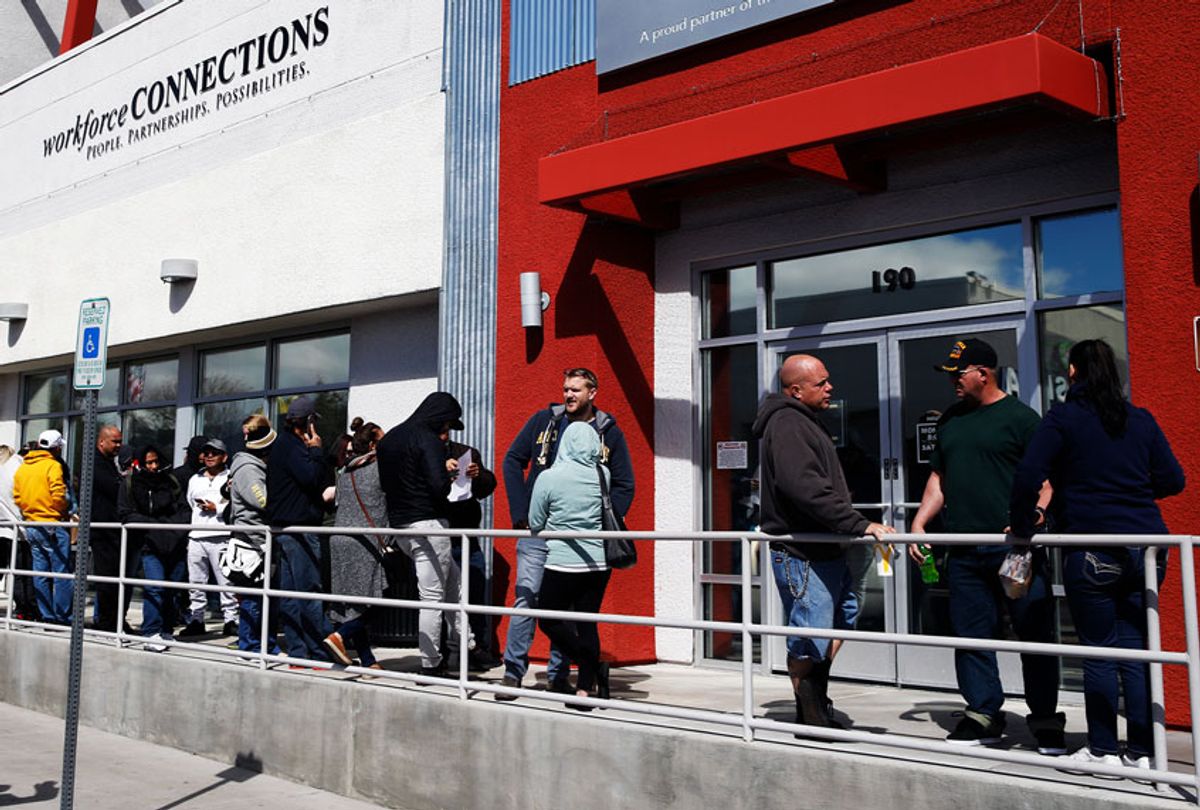A new report from the Department of Labor reveals that roughly 1.5 million workers applied for unemployment benefits last week, a larger number of initial applicants than economists had forecast.
The unemployment news release revealed that the advance figure for seasonally adjusted initial claims in the week that ended on June 13 was 1,508,000. This constituted a drop of 58,000 from the previous week, although that week's level was revised up from 1,542,000 to 1,566,000. Overall the advance seasonally adjusted unemployment rate was 14.1 percent for the two weeks prior to the one that ended on June 13.
Because some people have begun to return to their old jobs, the number receiving unemployment aid fell slightly during that period.
The news was disappointing to many economists who expected that, as restaurants and other businesses begin to reopen around the country, the number of new unemployment applications would significantly drop.
"It does seem like there are many new people filing for unemployment, and this is worrisome when we are three months into the crisis and you are starting to see re-openings across the nation," Gregory Daco, chief U.S. economist at Oxford Economics, told the Associated Press.
President Donald Trump celebrated earlier this month when the Bureau of Labor Statistics released that the economy had added 2.5 million jobs and the unemployment rate had fallen from 14.7 percent in April to 13.3 percent in May. The president celebrated by posting on Twitter, "Great going President Trump (kidding but true)!"; "Oh no, the Dems are worried again. The only one that can kill this comeback is Sleepy Joe Biden!" and "Experts said we would lose 7.5 million jobs in May, but we added 2.5 million."
Trump also used George Floyd, who was murdered by a Minneapolis police officer that week, as a political prop in his boasts about the economy. As the president wrote: "Hopefully George is looking down and saying this is a great thing that's happening for our country. (It's) a great day for him. It's a great day for everybody."
Gabriel Mathy, a macroeconomist at American University, told Salon that Trump's previous celebration of the economy was premature, since one reason for that drop was "that employers must rehire their payroll to qualify for forgiveness of their PPP [Paycheck Protection Program] loans, and so many workers are being rehired for that reason. Whether they remain on the payroll once that program expires later this year remains to be seen."
Mathy added that the numbers do not include all of the workers who were furloughed since some employers can classify them as "employed but not at work." Mathy also pointed out that "spending is still massively depressed and stimulus measures are scheduled to expire later this year, some as early as this summer."
Few economists disagree that America's current economic setback was partially caused by Trump's policies. According to the Center for American Progress, nations that engaged in early testing and implemented strong worker protections only saw modest increases in unemployment: South Korean unemployment rose from from 3.3 percent in February to 3.8 percent in April, Germany rose from 5 percent in February to 5.8 percent in April and Australia rose from 5.1 percent in February to 6.2 percent in April.
Unemployment in the United States, on the other hand, rose from from 3.5 percent in February to 14.7 percent in April — suggesting that roughly 17 to 18 million more Americans would have kept their jobs right now if America's unemployment rate had increased at roughly the same level as South Korea, Germany and Australia.

Shares